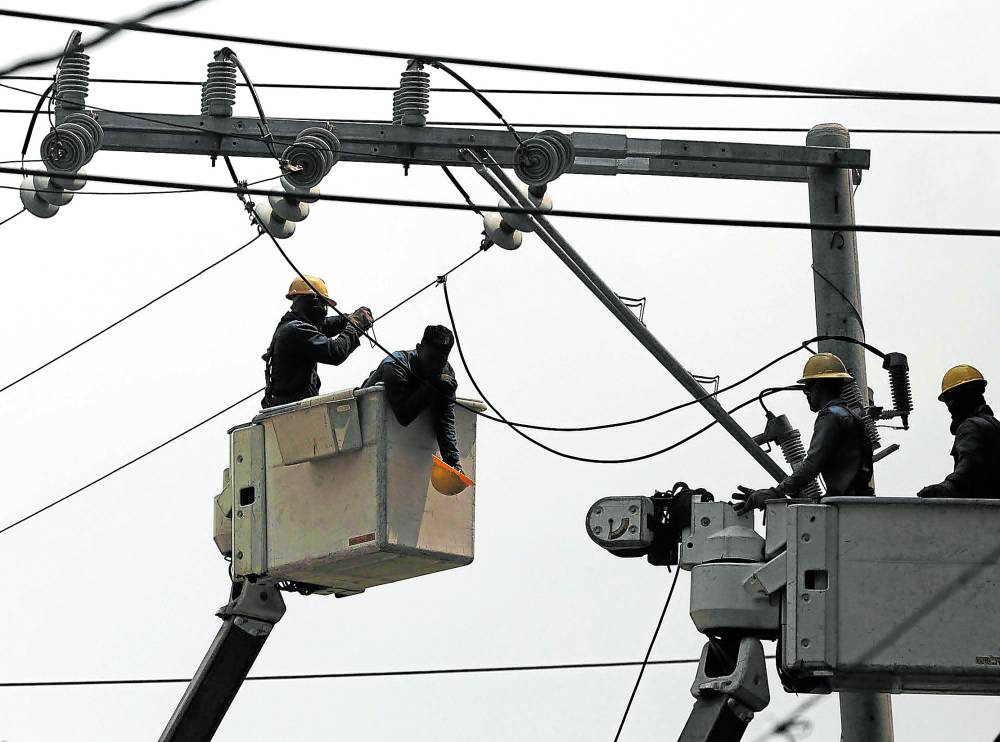Higher electricity prices forecast until May

Electricity prices are projected to increase as demand across the archipelago peaks during the summer months through May, the Independent Electricity Market Operator of the Philippines (Iemop) said.
Iemop assistant manager Chris Warren Manalo said the average Wholesale Electricity Spot Market (WESM) price was forecast to hover between P5 and P7 a kilowatt-hour during the dry season.
So far, WESM prices averaged P5.46 a kWh as of March 24, already surging by 35.8 percent from P4.03 recorded in the February billing as demand spiked and some power plants in Luzon and Visayas went on forced or scheduled outage.
WESM is the central marketplace for trading electricity as a commodity. Power generators sell their excess energy not covered by any supply agreement and power distributors buy additional capacities to augment their primary supply. Their prices are reflected in a consumer’s electricity bill as the generation charge component.
Iemop, which operates the WESM as required by Republic Act No. 9136, or the Electric Power Industry Reform Act, plays a pivotal role in fostering competition in the Philippine electricity sector and discharges its mandates under the policy and regulatory oversight of the Department of Energy (DOE) and the Energy Regulatory Commission.
Stable supply so far
In its latest briefing for March, Iemop noted the stable electricity supply that averaged at 18,900 megawatts (MW) in March.
However, it said the period saw a notable surge in average demand, jumping to 13,185 MW from 12,372 MW in February.
The increase was observed across regions, with Luzon exhibiting a 6.1-percent rise, followed by Visayas at 6.4 percent and Mindanao at 8.4 percent, it said.
The higher demand levels eventually resulted in a lower supply margin, which fell by 19 percent to 3,860 MW as of March 24 from 4,757 MW last February. This drop occurred despite an average supply increase of 138 MW.
Iemop also cited the planned and forced outages from several power plants during the first week of March, mainly from large conventional generators such as coal, natural gas, geothermal and hydroelectric plants with a combined capacity of 2,724 MW.
Additionally, it noted that there were capacities that went on forced outages amounting to 1,062 MW largely from coal and natural gas plants during the same period.
Consequently, the average price of electricity experienced a marked increase, climbing to P5.46 as of March from P4.03 in February, it said.
Regionally, the average spot price surged in Luzon to P5.26 a kWh last month from P3.97 in February, while Visayas and Mindanao witnessed price hikes to P6.26 from P4.58 and to P4.20 from P3.71 a kWh, respectively.
Ban on maintenance shutdown
Based on Iemop’s estimates, electricity demand in the Luzon grid in the coming months may reach its peak of 13,273 MW, an increase of 6 percent from 12,550 MW a year ago.
In the Visayas, peak demand may grow by 7 percent to 2,628 MW from 2,458 MW while Mindanao may register an 8-percent growth to end at 2,650 MW from 2,315 MW.
Iemop vice president for trading operations Isidro Cacho Jr. said he was hoping that no power generating plant would go on planned or unplanned shutdown during this period to avert any spike in WESM prices.
“During summer months, as you all know, [the DOE has a] policy that prohibits maintenance shutdowns [of power plants] during April, May [and] June. Hopefully, if there is no forced outage, we don’t see any significant increase in prices,” Cacho pointed out.
“But with the increased demand, most likely … there is possibly a slight increase in prices,” he added.
Cacho said the Mindanao-Visayas Interconnection Project (MVIP), whose commercial operations began this year, would help temper any potential increase in spot market prices.
The P51.3-billion MVIP unified three major power grids in the Philippines, allowing energy resource sharing as any excess power from one grid may be transmitted to another.
The MVIP has significantly improved supply security in the Visayas and Luzon grids by allowing excess power of up to 450 MW to be exported from the Mindanao grid, according to Iemop.
On average, it said the MVIP allowed an average of 341 MW to be exported to Visayas, whereas the Leyte-Luzon HVDC link connecting Visayas to Luzon provided an average of additional 296 MW to support meeting the demand in the Luzon grid, it added. INQ





















